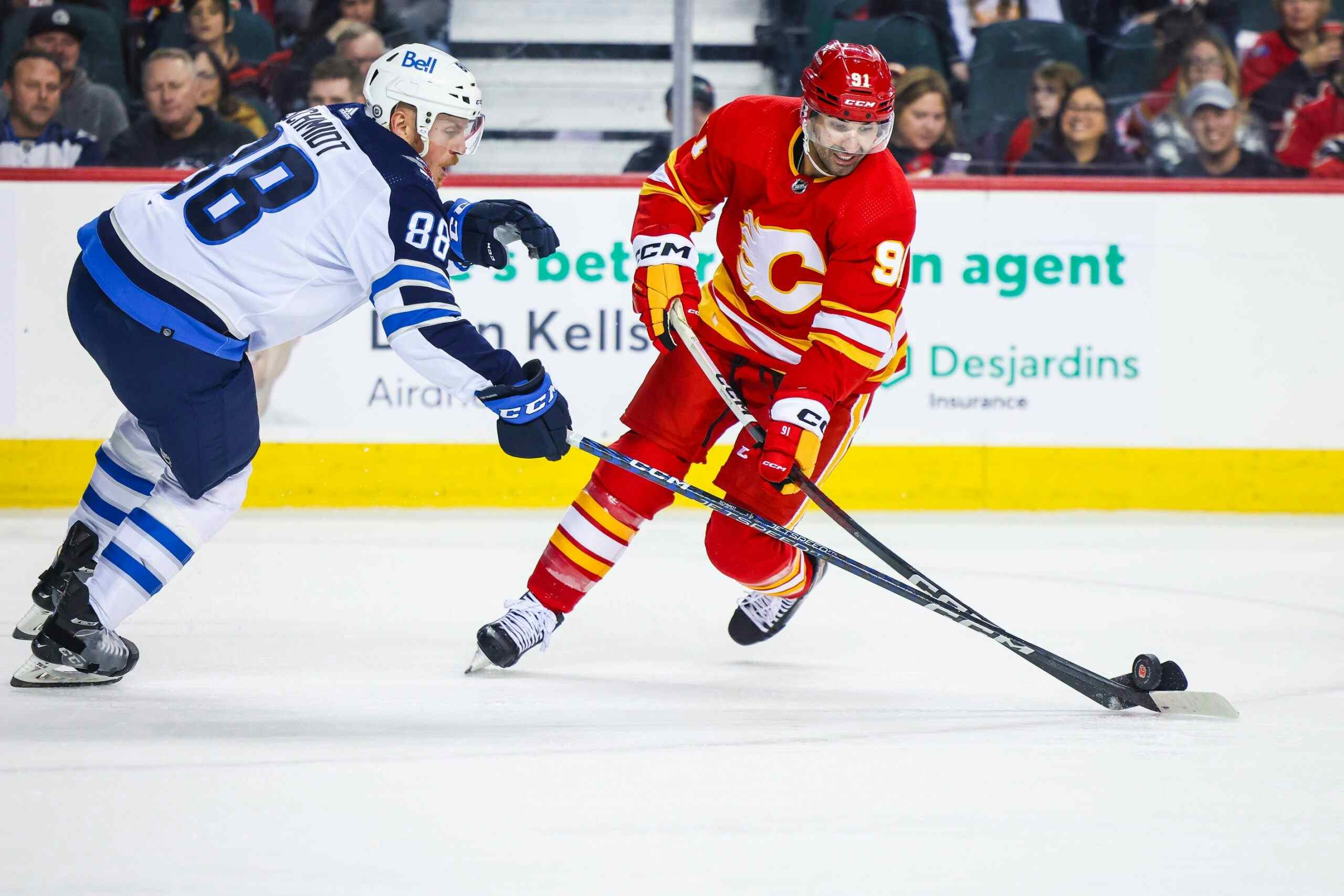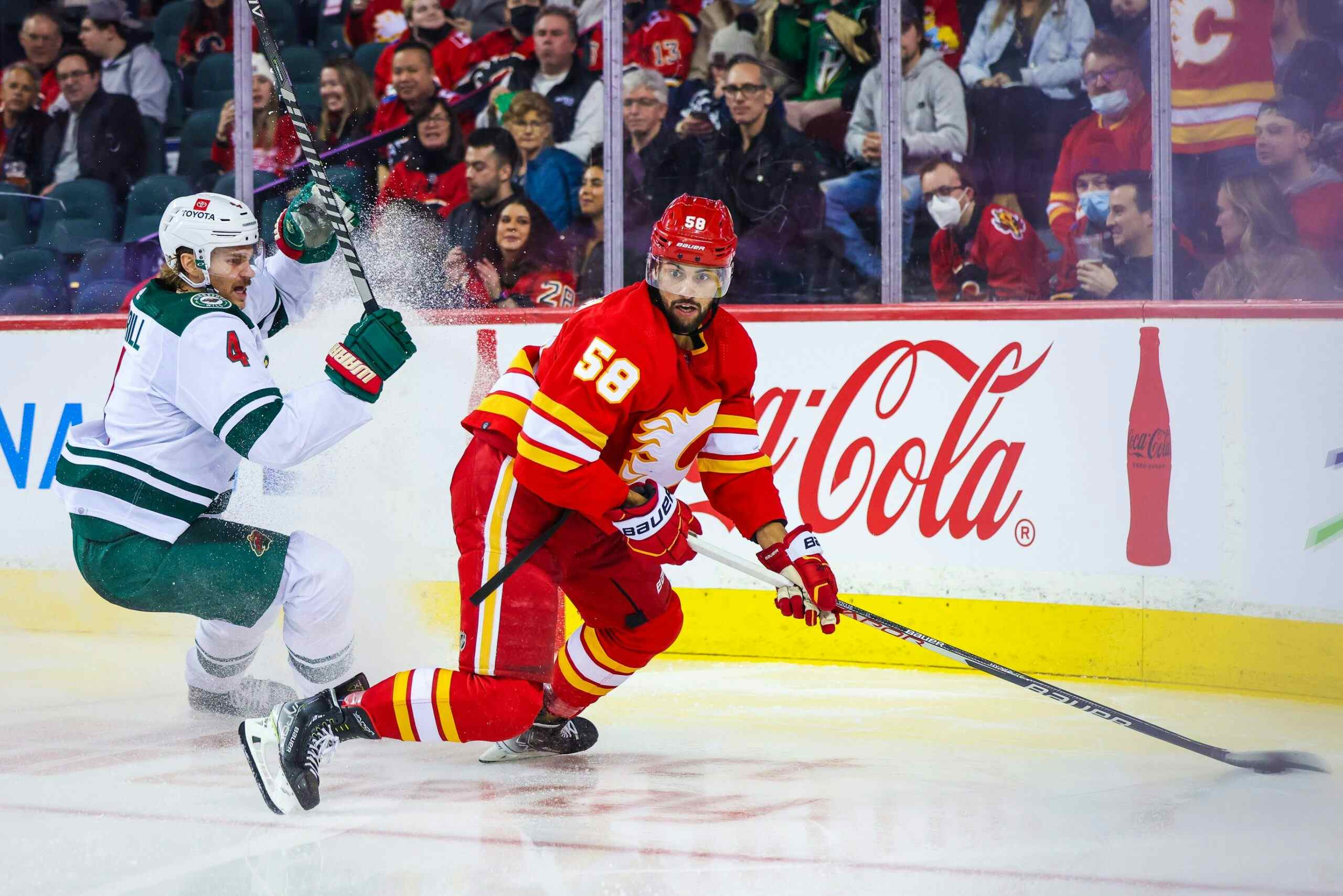The salary cap implications of Jaromir Jagr’s departure

By Ryan Pike
6 years agoThe impending departure of Jaromir Jagr from the Calgary Flames is perhaps the worst-kept secret in all of professional hockey. While the Flames are currently tight-lipped about what’s happening – and I’d imagine that’s out of respect for all #68 has done for the game – pretty soon the two sides will be parting ways, either via contact termination or by him being placed on the long-term injury reserve.
Whenever that happens, there will be some interesting salary cap implications.
Jagr’s contract has a $1 million base salary and up to $1 million in performance bonuses. They each impact the cap differently.
Base salary (and cap hit)
Jagr’s contract was filed with the NHL’s Central Registry on Oct. 4, the second day of the season, so his $1 million salary is pro-rated – the most he could’ve made over a full season is $994,000. By leaving early, the Flames will save roughly $5,376 per day of cap spending. He’s already earned around $510,000 against the salary cap this season. Their total cap savings will depend on when Jagr’s contract is officially terminated.
The interesting impact here will be dependent on which player ends up taking Jagr’s roster spot. Aside from Dalton Prout, every single player on the Stockton Heat carries a lower cap hit than Jagr’s. Functionally speaking, if the net effect of Jagr’s departure is that Andrew Mangiapane ends up sticking around for the rest of the season – the club needs to make a move to open a spot when Michael Frolik comes off the injured reserve in about a month – they end up saving around $1,586 per day. It’s not huge money, but it adds up and could be valuable wiggle room at the end of the season.
Performance bonuses
Jagr’s deal also involved up to $1 million in performance bonuses (which he was eligible for as a player signing a deal after turning 35), broken down thusly (per CapFriendly):
- $250,000 for playing in 10 games
- $100,000 for playing in 20 games
- $150,000 for playing in 30 games
- $200,000 for playing in 45 games
- $300,000 if the Flames make the playoffs
He’s already attained the first two bonuses for a total of $350,000. For salary cap purposes, performance bonuses are calculated at the end of the season. Teams are allowed to go over the cap ceiling, but only if what pushes them over the top are bonuses – this frequently happens due to bonuses on entry-level deals. Any spending over the cap counts against next year’s salary cap; the Flames currently have a $660,000 cap penalty because they went over last year’s cap due to bonuses.
Long-term injury reserve
In the event that Jagr’s contract is not terminated, there’s a good chance the Flames eventually opt to put him on the long-term injured reserve. In that case, the Flames will be able to replace Jagr on the roster with a player (or players) making up to his level of salary.
As we discovered last season, LTIR is weird and complicated and frustrating. The amount of cap space you gain depends on how much cap space you have when you elect to place players on LTIR, and it can also be declared retroactively. It’s much muddier in its cap implications than a straight up contract termination, but it’s another avenue that gives the Flames some cap relief should they try to add some salary at the trade deadline.
Recent articles from Ryan Pike





